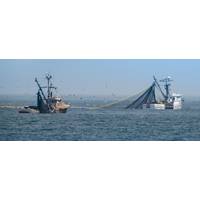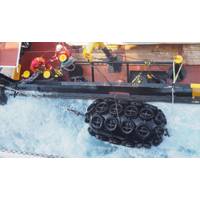
The Information Age is Transforming Fishing Worldwide
a sustainable US$570 million a year industry.Another success story is Cabo Pulmo, a five-mile stretch of coast at the southeast end of Mexico’s Baja Peninsula. Once a vital fishing ground, Cabo Pulmo was barren in the early 1990s after intense overfishing. Then local communities persuaded the Mexican government to turn the area into a marine park where fishing was barred.“In 1999, Cabo Pulmo was an underwater desert. Ten years later, it was a kaleidoscope of life and color,” ecologist Enric Sala, director of National Geographic’s Pristine Seas Project, observed in 2018.Scientists

Mexico's Oil Reform a Boon for Hard-hit Oil Service, Seismic Firms
data sales, the sector continues to struggle. Schlumberger this month announced the closure of its marine and land seismic acquisition business, two of four units at its WesternGeco subsidiary. Pushing Pemex In its efforts to break Pemex's monopoly and attract international oil firms, the Mexican government has charted a more aggressive reform than others Latin American countries. To encourage oil service and mapping firms to work quickly and extensively, the government gave them licenses for up to 12 years to sell data they collect. "On the American side (of the Gulf of
Petrobras, Total ink Strategic Alliance Deal
, with the transfer of the operation to Total. We will keep a 10 percent interest in this concession; - option to take on a 20 percent stake in block 2 of the Lost Fold Belt area, in the Mexican portion of the Gulf of Mexico, acquired by Total in partnership with Exxon in the licensing round the Mexican government held on May 12, 2016; - sharing the use of the regasification terminal in Bahia, with capacity for 14 million cubic meters/day; - partnership, with a 50 percent stake for Total, in the Rômulo de Almeida and Celso Furtado thermal plants, located in the state of Bahia, with a 322-MW

Multiclient Wide-Azimuth Deepwater Seismic Survey in Campeche Basin
WAZ deepwater multiclient seismic survey is located in the southern Gulf of Mexico. More than 80,000 km² of newly imaged subsurface data, which have been acquired in the last 12 months, are available for oil and gas companies participating in exploration in Mexico. The project follows the Mexican government’s opening of licensing rounds to non-government companies for the first time.
Schlumberger, Statoil Execute Multiclient WAZ Survey in Campeche Basin
to image the subsalt effectively, and we are bringing all of our experience gained in the US Gulf of Mexico to deliver enhanced subsalt imaging to our clients.” A fleet of eight vessels is conducting the survey in the Bay of Campeche for the three-year project. The project follows the Mexican government opening licensing rounds to non-government companies for the first time
PGS ASA - First Mover Offshore Mexico
Petroleum Geo-Services ASA (PGS) commenced operations of a MultiClient 2D seismic program offshore Mexico on May 16th. The two 2D vessels Atlantic Explorer and Sanco Spirit will acquire multiple projects recently approved by the Mexican government. The first program to be acquired is the Mexico Well Tie MC2D which will provide clients with an excellent grounding for understanding the hydrocarbon prospectivity in the area. Fast track products will be available in June 2015. "PGS is proud to conduct its first commercial seismic acquisition project in Mexico after approval of the
‘Don Diego’ Project Achieves Important Milestone
and scientific findings that were incorporated in the EIA. The unique attributes of the "Don Diego" deposit, particularly its size, quality and location, make it an important strategic resource and place it among the top-tier of new world phosphate deposits. As recently announced, the Mexican government awarded two additional concession areas that increase the size and value of the "Don Diego" project. Phosphate is a key and irreplaceable component of fertilizer. Mexico imported 83% of the fertilizer it used in 2013 and still only six million hectares of the 23 million hectares



 February 2024
February 2024





